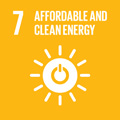- Docente: Diego Marazza
- Credits: 6
- SSD: FIS/07
- Language: Italian
- Moduli: Enrico Balugani (Modulo 1) Diego Marazza (Modulo 2)
- Teaching Mode: Blended Learning (Modulo 1); Blended Learning (Modulo 2)
- Campus: Ravenna
- Corso: Second cycle degree programme (LM) in Science and Technologies for Environmental Sustainability (cod. 6794)
-
from Oct 07, 2025 to Nov 04, 2025
-
from Oct 07, 2025 to Dec 18, 2025
Learning outcomes
At the end of the course, the student will be able to represent a system and have a basic knowledge of how to model the dynamics of the relationships between the elements of a system. Students will be familiar with the basics of environmental economics and the environmental policy categories of environmental management.
Course contents
Understanding problems in order to handle them: systems that evolve over time, the representation of dynamic systems, and the formalisation of systems using system dynamics techniques. Representing systems and formalising them for descriptive and predictive analysis. Systems Dynamics Lab: Use of dedicated software (Vensim). The aim is to train students to become medium-level system analysts and basic-level modellers.
Environmental modelling: dynamic models in physics, chemistry, biology and ecology.
The economics of the environment and the functioning of the market. The value of goods, production costs, market prices and consumer and producer surpluses. Externalities. Conservation of value over time: discounting operations. Environmental policy categories. The aim is to familiarise oneself with the concepts of environmental economics and be able to interpret a cost-benefit analysis.
Prerequisites:
Students are advised to refresh their knowledge of the following mathematical topics: derivatives, integrals and differentials (covered in Maths 1 and 2).
We also recommend watching the virtual download videos and the introduction to the software (Vensim) that we will use in class by the second lesson of the course.
Students with specific learning disorders (SLD) or temporary or permanent disabilities are recommended to contact the university office responsible (https://site.unibo.it/studenti-con-disabilita-e-dsa/en/) in good time. The office will propose any necessary adaptations, which must be submitted to the teacher for approval at least 15 days in advance. The teacher will then assess the appropriateness of the adaptations in relation to the teaching objectives.
Readings/Bibliography
The course comprises contributions from various disciplines and topics that are not covered in monographs. Therefore, it is necessary to use the teaching material provided by the lecturer. In addition to this material, the following texts and digital resources are recommended.
- [Module 1] Hannon, Bruce, and Matthias Ruth.Dynamic modeling. Springer Science & Business Media, 2001.
- [teoria CLD] Bilash Kanti Bala , Fatimah Mohamed Arshad , Kusairi Mohd Noh. System Dynamics
Modelling and Simulation. Springer Texts in Business and Economics, 2017. - Vincenzo Vita, Compendio di Microeconomia, Edizioni Simone
- [some basics of environmental modelling - modulo 1] Wainwright, John, and Mark Mulligan, eds. Environmental modelling: finding simplicity in complexity. John Wiley & Sons, 2005.
- Martín García, Juan - Theory and Practical Exercises of System Dynamics: Book for students and research to learn the applications of nonlinear and feedback control simulation models. (System Thinking 2019)
- Hannon, Bruce, and Matthias Ruth. Dynamic modeling of economic systems. Springer Science & Business Media, 2012.
- McDowell, Moore, et al.Principles of economics: European edition. University College Dublin, 2006. APA
- King, Stephen, et al.Principles of economics. 2012. APA
- Thinking in Systems, a primer (2008); Meadows (Donella H.), earthscan publishing
- Complexity a guided tour (2009); Mitchell (Melanie), Oxford University Press
- Open Courses del MIT
https://ocw.mit.edu/courses/economics/14-42-environmental-policy-and-economics-spring-2011/lecture-notes/ - Turner R.K., Pearce D.W., Bateman I. (2003) Economia ambientale, (a cura di Pellizzari F.), il Mulino, Bologna.
- http://www.systems-thinking.org/
- https://ocw.mit.edu/courses/15-871-introduction-to-system-dynamics-fall-2013/ (16’ instructor insight, recitations,flipped course)
- https://ocw.mit.edu/courses/res-15-004-system-dynamics-systems-thinking-and-modeling-for-a-complex-world-january-iap-2020/ (1h video and lot of material for self-study)
Teaching methods
There will be lectures and practical exercises. A variety of learning tools will be employed, including case study analyses, guided discussions, individual and group work, and lectures. The lectures will focus on key points and aim to transfer knowledge. Experimental activities will consolidate and apply the principles and tools studied on the course.
A dedicated laboratory is planned for modelling dynamic systems.
Attendance, especially during laboratory sessions and exercises, is important in order to gain a full understanding of the subject.
Assessment methods
The learning verification methods aim to assess the achievement of two main objectives:
(a) 'To be able to represent a system and model the relationships between its elements for management purposes'.
(b) Demonstrate knowledge of economic and political instruments for environmental management.
Students will be provided with a list of specific learning objectives to help them prepare for the examination.
Their grade will be the weighted average of the marks they receive for the specific questions on the various topics set by the lecturers. The questions are open-ended and students will be invited to provide concise, relevant answers.
The assessment criteria include:
- the ability to analyse and solve the question;
- the precision and accuracy of the language used in terms of both content and form;
- critical reflection on and discussion of the expressed concepts;
- contribution to discussion and attendance at lectures and seminars
- contribution to colleagues on the virtual forum.
The assessment is expressed as a grade in thirtieths, with honours where appropriate.
Note for working students and students unable to attend: Working students and students unable to attend are invited to notify the lecturers of this condition in writing.
Teaching tools
Video projector, PC, whiteboard and online teaching tools.
Vensim modelling software (https://vensim.com/free-download/).
Office hours
See the website of Diego Marazza
See the website of Enrico Balugani
SDGs


This teaching activity contributes to the achievement of the Sustainable Development Goals of the UN 2030 Agenda.
